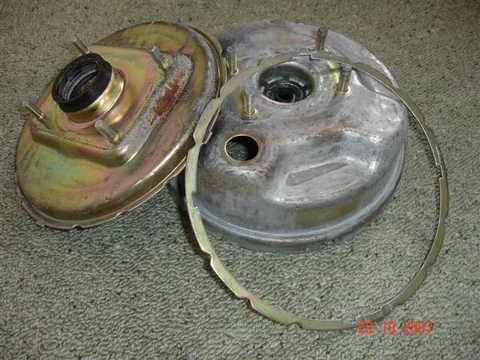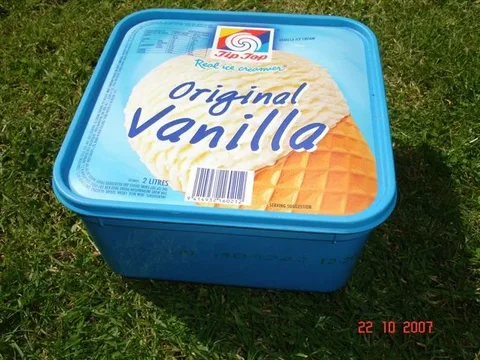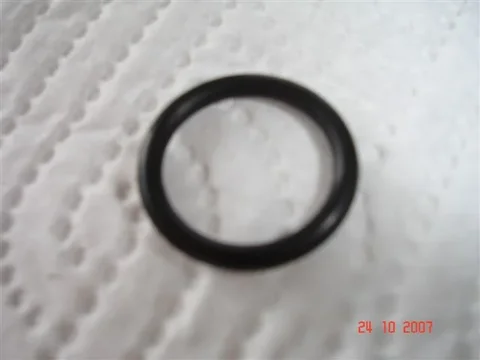Something funny is going on. Perhaps I've got too "verbose" for the ih8mud administrators? (Ended up losing 2 posts and getting one repeated - All at the instant I clicked "submit post". Ah well.)
I've decided to continue posting here rather than "getting back to booster assembly" because I have so little time. (Even less now.)
Here's a picture of the two shells together just to prove that I did indeed manage to turn that connector ring:

Quite a while back I got to thinking about the use of alternator-driven vacuum pumps on old Toyota diesels like mine. (Of course an FJ40 doesn't have such a vacuum pump and uses the traditional booster-vacuum-source of "the intake-manifold".) I've heard people say the pump is there because "these diesels can't produce intake manifold vacuum". This statement has always confused me and I don't think it is true!
My diesel engine has pistons and valves that suck in air. It also has a butterfly valve in the intake manifold. And a good vacuum must be produced downstream of that valve when I take my foot off my accelerator because that pedal movement closes it almost completely (exactly as happens in an old-school carbureter-equipped petrol engine).
I believe the Toyota engineers chose the vacuum pump because of safety concerns that arose because of the way my injector pump was controlled.
Imagine I'm driving my BJ40 over rocks on a cliff edge and the vacuum hose to my booster breaks. With the vacuum source being a vacuum pump (as at present), an alarm would go off to warn me of "low vacuum" and I'd usually be able to stop safely enough. There could be no effect on engine power output.
However, if the vacuum source were to be my inlet manifold, this event would reduce my braking ability AND simultaneously power-up my engine. I say this because old Toyota diesels such as mine use a fairly unusual method of "fuel control" whereby, instead of being controlled directly from the accelerator pedal - as most diesels are, fuel delivery is controlled by a leather diaphragm that moves in response to changing pressures/air-flows in the inlet manifold. So the broken booster hose would make my engine "think" my foot is down on the accelerator, and would therefore supply more fuel. And a diesel engine's power output is almost completely dependant on fuel delivery (with the "air-fuel ratio" being largely irrelevant in this respect). ......Hence - Newspaper report reads : "Fourwheel drive accelerates over a cliff while the driver was apparently frantically trying to stop".......... Not good!!!!
Don't believe me? Then try this (if you dare)...........There is still danger remaining in these vehicles (even with the factory's "vacuum pump solution"):
Start up your B, 2B, 3B, H, or 2H diesel engine and leave it idling. Then simply detach the vacuum hose from the rear of your injector pump governor housing. Then watch in horror as your engine speed leaps instantly from "idling" to "its revv limit". (So that hose MUST be well-secured. Although there is little risk of it coming off by itself unless you're one of those people who have fitted a turbo which raises the pressure inside it to above-atmospheric levels!)
Worth thinking about!
actually just looked closer they only show one rebuild kit for your booster ,you must have front drums ?
















